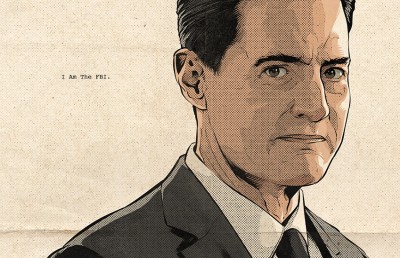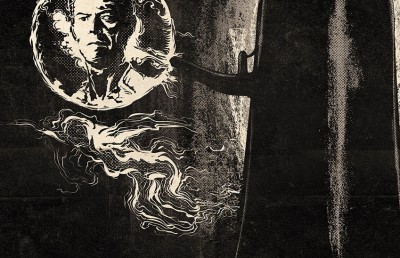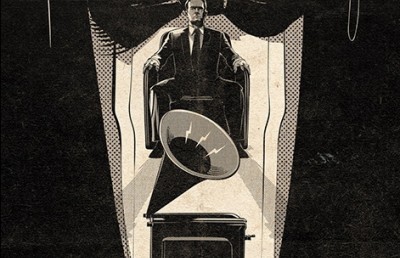In Heaven Everything is Fine: Murder and Martyrdom in the Lynchverse, from Peter Ivers to Laura Palmer
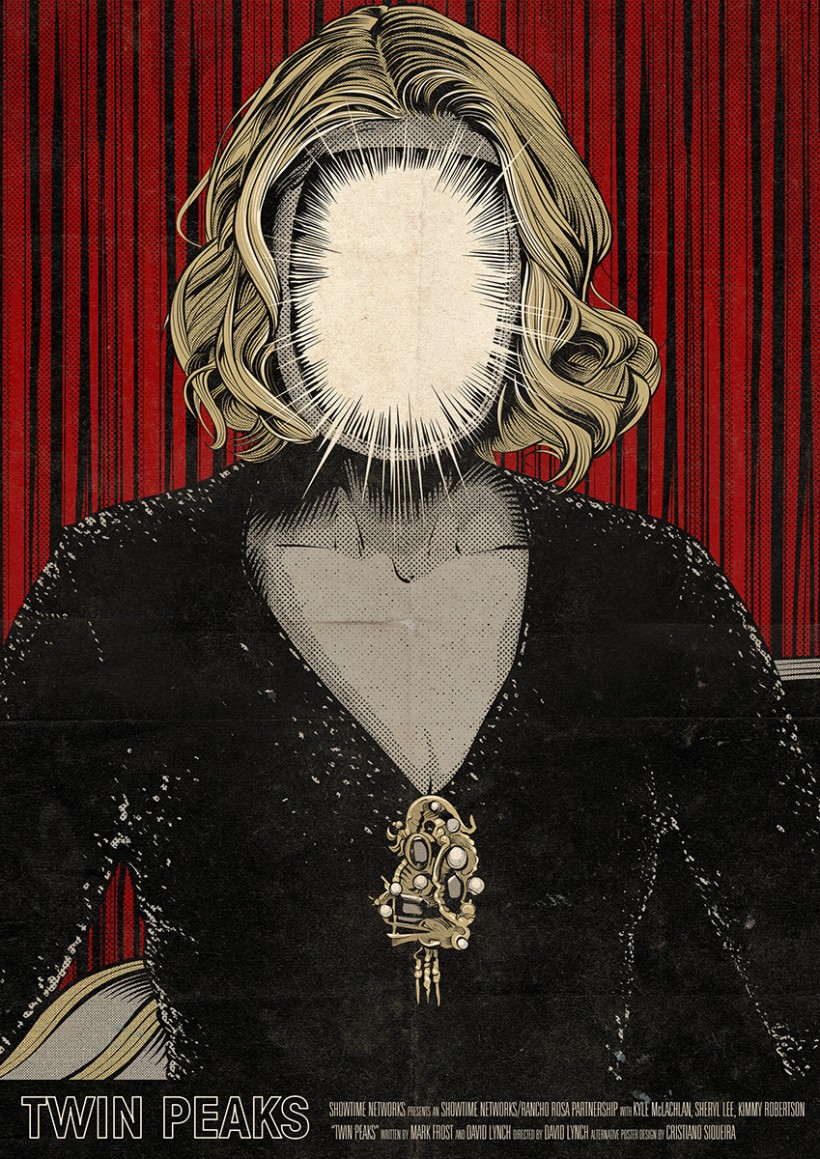
Image courtesy of Cristiano Siqueira
On March 3, 1983, musician, performer and host of Night Flight’s New Wave Theatre variety show Peter Ivers was found bludgeoned to death in his loft apartment in Los Angeles. His death rocked every tier of the Hollywood community, from influential studio execs to the DIY musicians of the nascent LA punk scene.
To put it plainly, Ivers knew everyone. From the moment he arrived in LA he became a fixture on the scene, and a bridge between the underground art world and the mainstream entertainment establishment. Small and unassuming physically, his personality was larger than life, and people took to him immediately.

Among those doubtless shaken by the crime was David Lynch, then a young director about to embark on his third feature – a trajectory that had been directly put into play through a collaboration with Peter Ivers on a little song called “In Heaven Everything is Fine,” which would become the centerpiece of Lynch’s 1977 debut feature, Eraserhead.
A Harvard graduate who was instrumental in the formation of both The National Lampoon and Saturday Night Live, Ivers had moved to LA in the early 70s to score fellow Harvard alumnus Tim Hunter’s AFI film “Devil’s Bargain.” Ivers soon became the unofficial musician-in-residence at the AFI, where David Lynch was also serving a fellowship at the time. He and Lynch bonded over their mutual love of jazz and blues (the Fats Waller record used in Eraserhead came from Ivers’ collection), but they also shared a deep spirituality, and a belief in signs and serendipity.
Ivers also had a “guardian angel” quality – while his own success eluded him, he was an uncannily frequent conduit for that of others, and David Lynch was no exception. As author Josh Frank points out in his biography of Ivers, Peter introduced Lynch’s work to his girlfriend Lucy Fisher, who was an executive at the then-nascent Zoetrope Studios. “She set up the private screening of Eraserhead for Mel Brooks and Coppola that would change Lynch’s life,” says Frank. 1 This screening cemented the offer to Lynch to direct The Elephant Man.
Ivers was part Mary Poppins and part Peter Pan, a fusion of mother/child/male/female that would see a reflection in various Lynchian characters to come, including Eraserhead’s Lady in the Radiator, whose unearthly voice was Peter’s own.
The Terror of Umbilical Night
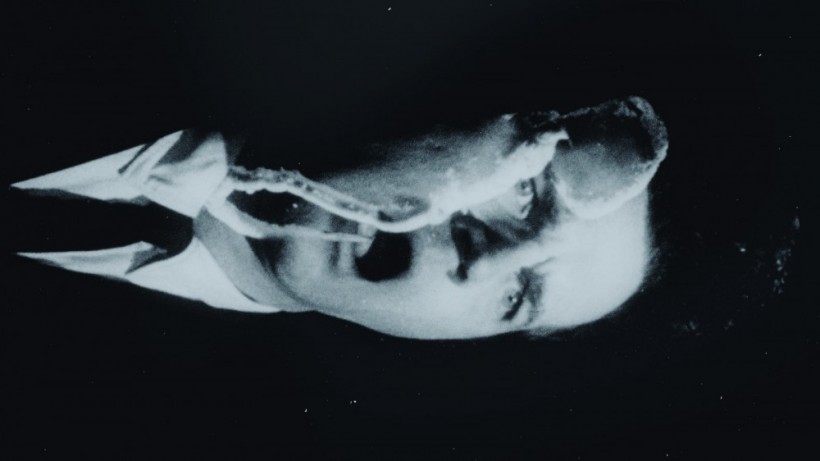
Lynch often ascribes female experience to male characters, and Peter Ivers’ real life gender-fluid impishness bolstered Eraserhead’s strange examination of birth, motherhood and interior female space. He was not a stereotypical “masculine” presence; in fact he’d been described as having a “twee and effeminate childlike quality,” and many publications incorrectly identify him as gay. 2 The textual disruption created by Ivers’ voice being used for a female character is also not the last time Lynch would utilize gender ambiguity in musical performance to uncanny effect: In David Copenhafer’s “Mourning and Music in Blue Velvet” he talks about how the film’s musical performances create “an unstable logic of gender and sexuality” in which “confusion exists between the visible and the audible.” 3
Birthing imagery abounds in Eraserhead, however much of it is related to its male protagonist. The first image we see in the film is that of Henry’s face floating in space, expelling translucent umbilical creatures from his mouth. When his girlfriend Mary gives birth, the baby is a sad, skinless thing that wails late into the night. Mary eventually abandons Henry with the baby, who is taken aback at the realization that this sickly creature has come from him.
When Henry’s sultry neighbour locks herself out of her apartment and seeks refuge with Henry, the pair’s illicit kiss envelops them in a pool of viscous milk that absorbs them into the “other place.” It is the theatrical realm of the Lady in the Radiator, Henry’s “spirit guide” and the film’s closest analogue to himself, assuring him despite his increasing existential horror that “in heaven, everything is fine.” As she giggles coyly and crushes the umbilical creatures that drop from the sky – those birthed by Henry in the film’s opening – she “channels the frustration and fears of the principle character through song, in a manner the protagonist is incapable of doing,” writes Maura McHugh, signaling what will become a motif in Lynch’s films. 4
The Lady in the Radiator lives in one of Lynch’s earliest “other places” that exist within our own, that would include the underground of The Grandmother, the Lodges of Twin Peaks and Club Silencio in Mulholland Drive. These characters may not be “in heaven” but are in a purgatorial place through which the protagonists must pass to get there, and they act as combination tricksters/shamans who guide the protagonists through codes and signs.
Like the Lady in the Radiator and her ilk, Ivers was both a reassuring and slippery presence, and by extension, in many cases these mischievous nurturers invite comparison to how Lynch presents maternal characters; he is suspicious of motherhood and frequently calls attention to its contradictions.
As early as his third short film The Grandmother Lynch had put into place conflicting mother characters. A little boy who sprouts up from another world below the ground is adopted by a licentious couple, including a mother who tries to molest him. He creates a mound of dirt on his bed and plants a seed, to ‘grow’ a grandmother to protect him, even assisting in her birth by delivering her from a giant root. The Grandmother would thus serve as the first of the Lynchverse’s otherworldly protectors. For a while they are happy, and she is able to shield him from abuse – until she gets sick and becomes frightening.
In The Elephant Man, disfigured protagonist John Merrick’s mother is the object of idealization, as conveyed through the dream-like sequences that bookend the film. His mother dies, ‘abandoning’ him to a life of abuse in the sideshow business before being taken in by a doctor determined to restore the wretched man’s dignity. The film ends with a vision that rejects the chaos of his birth and restores his faith, ending with his mother’s reassurance, which comes, like The Lady in the Radiator, from “another place” – only one he is certain is heaven, from where she watches over him as a literal guardian angel. The final words in the film (“nothing will die”) are hers, with her face floating in the cosmos – as Henry’s did before her and Laura Palmer’s would in various incarnations of Twin Peaks.
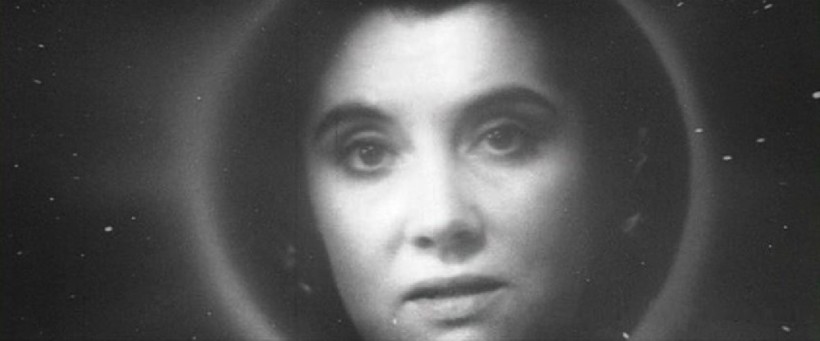
Motherhood is complicated further in Lynch’s Blue Velvet. Sultry nightclub singer Dorothy Vallens is terrorized Frank Booth, who has kidnapped her husband and son and forced her into violent sexual roleplay, in which she is both debased lover and idealized mother. She calls him “Daddy” and he calls her “Mommy,” inhaling amyl nitrate and regressing to a perverse infantilism in which he yells “Baby wants to fuck!” while simultaneously punching his “mommy” in the face. 5
Frank Booth’s behavior recalls that of an abused or abandoned child who both resents and idealizes the absent mother. It is one of Lynch’s many jabs at the credibility of motherhood, including the mother in Eraserhead who leaves Henry with their baby and never returns (and even Henry, who accidentally murders his own child) and Twin Peaks’ Sarah Palmer, who self-medicates to avoid witnessing her daughter’s sexual abuse at the hands of her husband. The emotional unavailability of her mother is one reason Laura believes that her guardian angel has abandoned her.
In Dreams
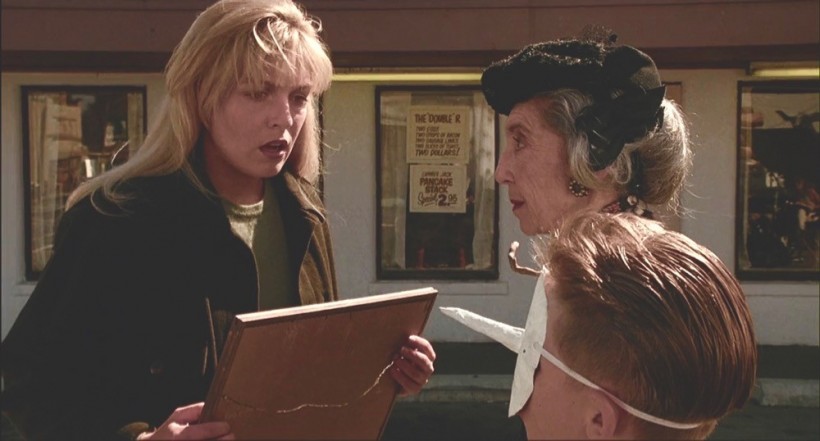
But while Laura feels abandoned by the angels, there are other characters who guide her, some of whose motives are not always clear. Which leads to another significant “grandmother” in the Lynchverse: Twin Peaks’ Mrs Chalfont, aka Mrs Tremond. Together with her young grandson (played by David Lynch’s own son Austin Lynch), who sometimes dons the pointed mask of the jumping man, she often appears as a character who exists between two worlds – visible to people in the physical world but acting as a placeholder or sentinel who keeps space open for others to cross over, and disappearing once this transition has occurred. In Fire Walk With Me, Mrs. Chalfont and her grandson appear outside the RR Diner to warn Laura that BOB has invaded the sanctuary of her bedroom and has discovered her diary, but they also give her a photograph of an open doorway. It is this photograph that gives Laura the mobility to move through the Lodges in her dreams, serving “as a nexus for Laura to access and interact with the film’s conflicting realities and the characters who inhabit them.” 6 There Laura is given clues that will help her either propel or subvert her destiny.

In examining how female characters assert themselves in Lynch films, scholar Ildko Juhasz offers that the further the director strays from traditional narrative, the more “female” his films become. Female characters, Juhasz says, “interact with the spaces within the films, navigating them and managing them to their own benefit. These spaces, which include interrelated storylines, merging realities and locales with shifting connotations, would not be available to them in more coherent movies.” 7
But in her essay “The Canonization of Laura Palmer”, Christy Desmet posits that even as Twin Peaks becomes increasingly focused on female characters, “the patriarchal effort to control woman by subjecting her to martyrdom grows more sinister.” 8 She mentions that according to Christian iconography, the eagle soaring through the sky at the time of Laura’s death suggests that she has “transcended the paradoxes of her earthly existence.” 9 But she is simultaneously skeptical of this imagery, since she also points out that in classical iconography, the eagle is a masculine symbol most often associated with Jove, the god of Thunder.
In 1379 Geoffrey Chaucer wrote a poem over the course of three books collectively called The House of Fame, which reflects on the nature of dreams, and itself takes the form of a dream vision. In it, the dreamer finds himself inside a temple dedicated to Venus, the goddess of love. While he is there he sees a tablet bearing the tale of The Aeneid, and recounts how Jove ordered Aeneus to betray his lover Dido, which led to her suicide.
The dreamer wanders outside of the temple into a field, where he is scooped up by a giant eagle, who has been instructed by Jove to take the dreamer to the ‘House of Fame’ – considered the “natural abode of sound” 10 – as a reward for his devotion to Venus. The eagle acknowledges that though the dreamer has toiled without recognition, “nevertheless you have set your mind – as small as it may be to making books, songs, and ditties, in rhyme or in cadence, as you best know how, in worship of Love.”
“Will Jove transform me into a star?” the dreamer asks the Eagle. But the Eagle informs the dreamer that Jove has other plans for him.
It is important to mention here that the primary suspect in the murder of Peter Ivers was a man named David Jove.
Nervous About Meeting ‘J’ Tonight
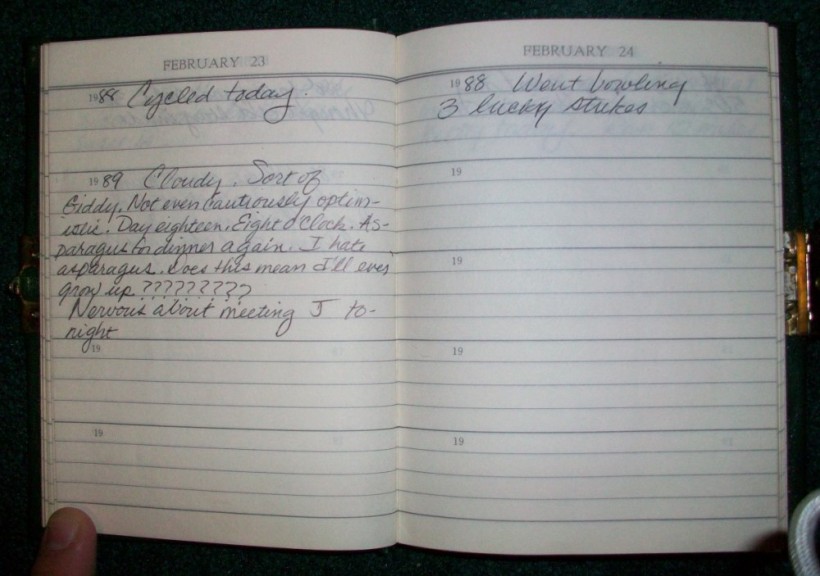
In the 1960s David Jove – then still using his birth name, David Sniderman – was a Canadian former child actor hiding out in the UK. Known as “The Acid King” he was a notorious drug source in music circles, and a member of the Rolling Stones entourage who was later dubbed “the Riddler of Redlands” after serving as chief rat in the infamous 1967 bust at Keith Richards’ Sussex home. Rock photographer Michael Cooper, who was present during the raid, recalled that Jove carried an attache case filled with all manner of narcotics and – atypical for the free-love scene – guns. Cooper maintains that even back then, though his stated mandate was to “turn on the world,” Jove’s dark side was visible. 11
After relocating to the US following the Stones’ drug bust and changing his name, Jove settled in LA and began to explore his own creative talents as a musician and producer with an eye on television. In 1981 he hatched the idea of a public access variety show called New Wave Theatre, which would showcase local talents from the underground music, art and film worlds, and tapped Peter Ivers to be the host. While opposite personality types in many ways, Ivers and Jove were drawn together by a belief that they could make art that would transcend the mainstream while still achieving mainstream success.
But many saw the collaboration as dangerous. Ivers’ longtime girlfriend Lucy Fisher saw his work with New Wave Theatre as beneath him; she felt he was sublimating his own genius to be “the mouthpiece for Jove”. Where Ivers was seen as a radiant, spiritual presence, many of his friends saw Jove as an obsessive, temperamental gun nut. But even though Peter projected an outward calm, he was secretly driven to seek approval from others, a residual dependency from having grown up with a sadistic father who constantly belittled him. 12 He thus had a willingness to accommodate Jove that few understood.
All the taped segments of New Wave Theatre were recorded and edited in Jove’s “cave” – an old decrepit storefront with blacked-out windows that could only be entered through a door in the alley, evoking the “convenience store” that would feature so prominently in the lore of Twin Peaks. The place gave people the creeps. “You could be there for an hour without knowing there was someone else in the room,” recalled Ivers’ friend Peter Rafelson, “then suddenly notice an ominous-looking stranger who had been standing right beside you the whole time.” 13 But Jove, who wrote and edited the show, did have an artistic spark that couldn’t be denied, and within months of premiering on Los Angeles Public Television, the show was picked up by the USA Network’s Night Flight program, which meant that it would now be broadcast across the US. Jove saw big things on the horizon.
But on March 2, 1983, Peter Ivers sold a screenplay. After years of struggling financially, he finally had a big infusion of cash coming his way. That night, he went to see David Jove, to tell him that he was leaving New Wave Theatre. Less than five hours later, Peter Ivers was dead.
The crime scene was instantly contaminated; upon hearing of his death, Ivers’ friends and neighbours flocked to his loft, which had not been properly secured by the police. David Jove – who had no alibi, claiming he’d “blacked out” and couldn’t recall his whereabouts at the time of the murder – managed to abscond with the bloodstained sheets from Ivers’ bed. 14 Though not immediately forthcoming, Peter Rafelson eventually admitted to the private detective on the case, David Charbonneau, that he had swiped Peter’s diary, which had been sitting on the floor by his bed.
Both Peter Ivers and Laura Palmer were involved in some shady dealings in the days leading up to their deaths. “Nervous about meeting ‘J’ tonight” Laura wrote in the diary later found by the police. Peter’s diary expressed a similar sentiment: “There were these guys in San Francisco, and I had to go up there,” Charbonneau paraphrased Ivers’ diary from memory, “and we were trying to make a deal…This is the only problem I had, these five guys, I’m afraid of these people…” 15
Charbonneau took this entry as implying a drug deal that Peter was reluctantly carrying out on behalf of Jove. “The speculation was that somehow Jove talked Peter into helping him with this deal or something,” says Ivers biographer Josh Frank, “but Peter was trying so hard to break away from the ‘Peter Pan’ life and go legit, and perhaps he pulled out of helping Jove with a particular aspect of the more shady stuff.” 16
While the drug motive was a potent one, Charbonneau suspected Jove for a more personal reason: namely that “Peter was his alter ego and leaving him.” 17
Terminal Love
Terminal Love, and a fatal case of rock and roll. But I wouldn’t say I’m suffering. It’s more like, like being in heaven. – Peter Ivers, Billboard Magazine 1974
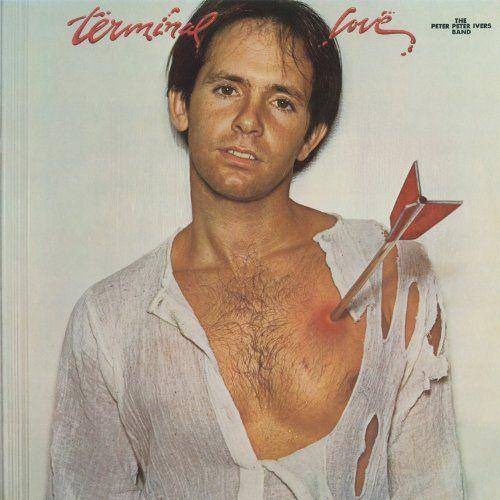
In the end, both Peter Ivers and Laura Palmer were canonized by their tragic deaths, and are remembered by their respective communities for the things they did to help others. The connection between them is bolstered by the fact that Jack Nance’s character Pete Martell is the one to discover Laura’s body; not only is he the star of Eraserhead (and his character’s name is ‘Peter’) but he himself would be killed only a few years after the original run of Twin Peaks, in another cold case like that of Peter Ivers.
In her essay “The Canonization of Laura Palmer” Christy Desmet points out that the community of Twin Peaks makes her murder “a martyr’s mystery.” 18 She goes on to make comparisons between Laura Palmer and Laura de Noves, the unconsummated beloved of medieval humanist poet Petrarch, who sanctified her in his poems after her death, as Donna Hayward’s younger sister Harriet would for the beatified Laura.
Laura’s frenetic volunteer work – with the Meals-on-Wheels program, with Johnny Horne and Josie Packard – is an attempt to assuage the dark forces pulling her down into spiritual corruption. Like many martyrs Laura goes through a drawn-out ordeal leading to her death. “Laura’s corpse, inscribed with multiple shallow stab wounds that make her a kind of adolescent St. Sebastian,” 19 says Desmet – a poignant analogy given that the cover of Peter Ivers’ 1974 album Terminal Love has drawn the same comparison. Both Peter and Laura left behind documents – recordings, letters, diaries – that stand as “testaments to the devout.”
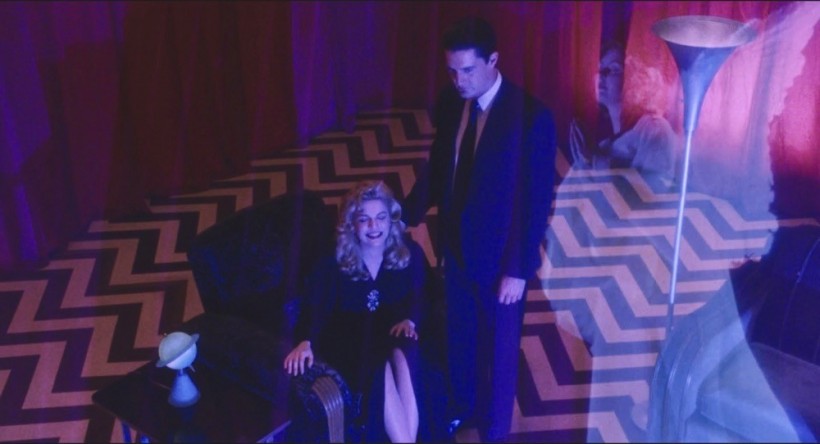
After Laura is dead, and in the Red Room, she finally sees her angel, hovering peacefully above her. Agent Cooper, who she has never met in reality but whose life will be inextricably tied to hers in the Twin Peaks universe forever after, is standing beside her. Laura laughs heartily and weeps simultaneously as she looks gratefully at her angel, who hadn’t abandoned her after all. Recalling what Doc Hayward said to her in the days leading up to her death: “The Angels will return. And when you see the one that’s meant to help you, you will weep with joy.” The implication is that Laura has found peace – but instead of moving over to the White Lodge, Laura stays on in the Red Room, to act as a guide to others. “Most important for Laura’s canonization is her role as intercessor for her father at the time of his death,” writes Demet. As Leland Palmer dies, he describes how he sees a vision of Laura, welcoming him into the light.
The next time we see actress Sheryl Lee in Lynch’s filmography, at the end of Wild at Heart, she herself has taken on the role of guardian angel in the form of Glinda the Good Witch – one of many elements of The Wizard of Oz that Lynch incorporates into Barry Gifford’s story of sex-fuelled, star-crossed love. 20 She gets the last word in the film, telling Sailor (Nicholas Cage), “Don’t turn away from love,” a vision again calling back to the final address by John Merrick’s mother at the end of The Elephant Man.
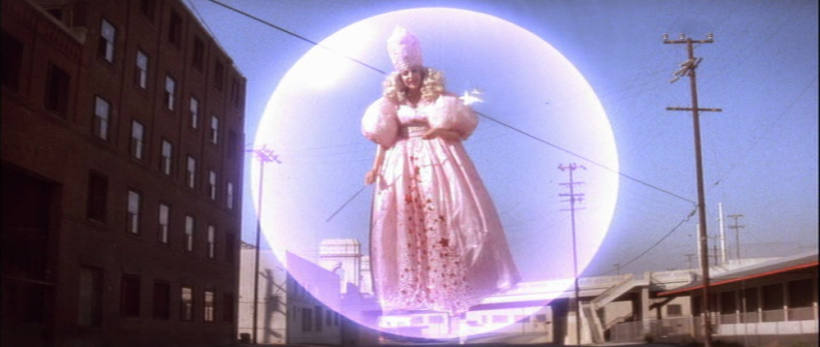
While many readings of Twin Peaks: The Return see Laura Palmer as a character with a tragic destiny that she is unable to escape even with the help of her posthumous protector Dale Cooper, Fire Walk With Me shows us a character that has agency. As she faces her last moments in the train car, she knows that what Bob really wants is to be inside of her, to take her over completely, and that if she allows this to happen, she will become like Leland, an instrument of pain and suffering for others. Instead she chooses to put on the owl cave ring which, in her dream, Cooper has specifically warned her against doing, because to put on the ring means she will die.
The day Peter Ivers died, he bought a copy of his favourite book as a gift for his friend Peter Rafelson – it was Frank Herbert’s Dune, which David Lynch himself would be shooting less than a month later. Inside the front cover, he inscribed it, “Every decision you make is a chance to be a hero.”

++++
Special Thanks to Josh Frank, Justin R. Lafleur and Karim Hussain
Note: This is the original English version of an essay that first appeared in French translation for 24 Images No. 184 (October 2017).
Notes
- Frank, Josh. Personal correspondence with author, September 2017. ↩
- Ivers is identified as such in both David Ensminger’s Visual Vitriol: the Street Art and Subcultures of the Punk and Hardcore Generation and Tony Marsico’s Late Nights with Bob Dylan. ↩
- Copenhafer, David. “Mourning and Music in Blue Velvet,” pp. 17-18. ↩
- McHugh, Maura. Twin Peaks: Fire Walk With Me. Midnight Movie Monographs, p. 11. ↩
- With its sense of performance, spectacle, roleplay and debasement, Blue Velvet also inverts some of the ideas in Von Stroheim’s The Blue Angel, in which Marlene Dietrich plays a cabaret singer who is lusted after by many, including the respected university professor who marries her only to sink to ridicule because of his own obsession and jealousy, inviting such vitriol from his beloved – misguidedly intended to restore his previous conviction – that he ends up killing himself. ↩
- Juhasz,Ildko. Transcendent Voices: Heteroglossia and the Power of Female Identity in Three Films by David Lynch. Master’s Thesis, Aubur university, Auburn AL, 2011, p. 49. ↩
- Ibid, p. 5. ↩
- Desmet, Christy. “The Canonization of Laura Palmer” in Full of Secrets: Critical Approaches to Twin Peaks, p. 106. ↩
- Ibid, p. 97. ↩
- Chaucer, Geoffrey. The House of Fame. ↩
- Wells, Simon. The Great Rolling Stones Drug Bust. Omnibus Press, Jan 19, 2012 (no page numbers). ↩
- Schwartz, Tony. “Forever Young” in New York Magazine. Sept 5, 1983. ↩
- Qtd in Frank, Josh and Charlie Buckholtz. In Heaven Everything is Fine: The Unsolved Life of Peter Ivers and the Lost History of New Wave Theatre (no page number). ↩
- Ibid, p. 283. ↩
- Ibid (no page number). ↩
- Frank, Josh. Personal Correspondence with author, September 2017. ↩
- Qtd in Frank, Josh and Charlie Buckholtz. In Heaven Everything is Fine: The Unsolved Life of Peter Ivers and the Lost History of New Wave Theatre (no page number). ↩
- Desmet, Christy “The Canonization of Laura Palmer” in Full of Secrets: Critical Approaches to Twin Peaks, p. 94. ↩
- Ibid, p. 95. ↩
- Though Wild at Heart was released prior to Fire Walk With Me, because the latter is a prequel it comes chronologically first. ↩




